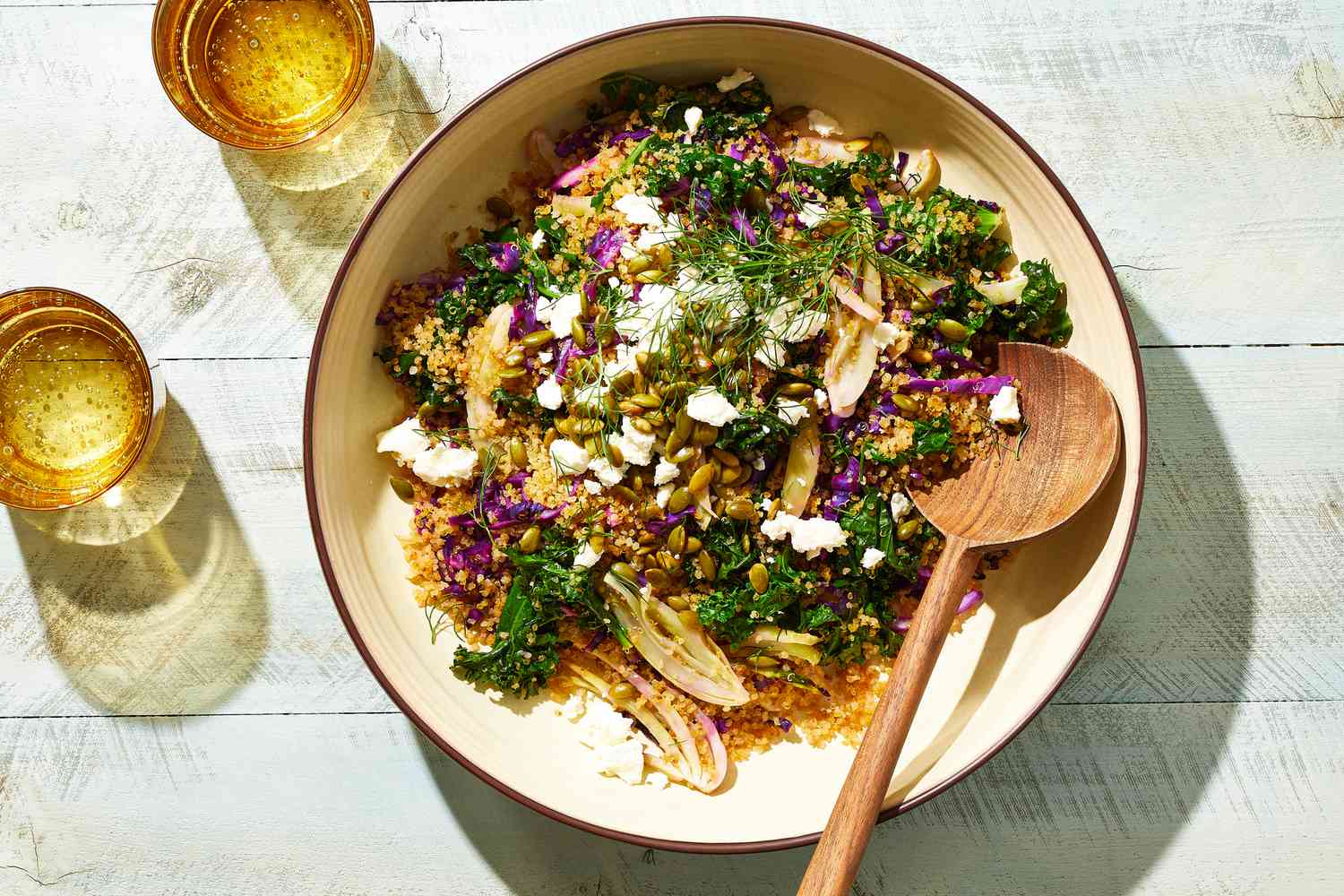
If you’re living with high blood pressure—as 120 million Americans are, according to the Centers for Disease Control and Prevention—you may be focusing on lowering your sodium intake and eating less saturated fat. But one nutrient you may not give much thought to (but should!) is protein. We’re talking about quality protein at each meal and snack.
Making sure you include a good range of protein foods in your meals can help you improve your heart health. A 2022 study published in the journal Hypertension looked at over 12,000 participants and found that those who ate at least four different types of protein each week—from a variety of animal and plant sources, such as eggs, meat, whole grains and legumes—were 66% less likely to develop high blood pressure (also called hypertension).
Protein is important because when it’s digested, it breaks down into amino acids in your body, per the National Library of Medicine. You need amino acids to repair body tissues, grow and function properly. Your body can make some amino acids, but others are considered essential, meaning you have to get them from protein-containing foods.
To improve your heart health, here are seven high-protein foods to add to your grocery list.
Photographer: Brie Goldman Food Stylist: Annie Probst Prop Stylist: Gabe Greco
1. Fish
Whatever type of fish you like, from salmon to halibut, this is a great protein to include a few times per week. Fish contains quality animal protein, but it’s also high in potassium. Potassium is one of the most important nutrients you can ingest if you’re looking to lower your blood pressure, according to the American Heart Association. Potassium calms the tension in your blood vessels and counteracts the effects of too much sodium.
2. Eggs
Eggs are packed with nutrition, and though the yolks have gotten a bad rap through the years for their cholesterol levels, their slate has been wiped clean. As the AHA points out, the federal dietary guidelines dropped the cholesterol concern because of little scientific evidence. Whole eggs are nutritious and contain vitamin A, selenium and several B vitamins. And it might surprise you to learn that eggs contain the antioxidants lutein and zeaxanthin. They’re powerful antioxidants which are famous for eye health, but are also associated with lower risk of hypertension, according to a 2022 study in Frontiers in Nutrition.
3. Nuts and Seeds
Take some time to enjoy walnuts, pecans, cashews, almonds, sunflower seeds, pumpkin seeds and more. Not only do nuts and seeds contain good-quality protein, vitamins and minerals, they also have antioxidants that show promise in reducing oxidative stress in the body. Some research, such as one study in Nutrients in 2020, shows that lower levels of oxidative stress may promote overall heart health. Try these delicious recipes to help you add more nuts and seeds to your diet.
4. Sirloin Steak
Beef is chock-full of high-quality protein, plus heme iron, which our bodies can absorb more easily than iron from plants. Beef is also a wonderful source of vitamin B12 and minerals like magnesium, folate and phosphorus. According to the USDA, a 4-ounce serving of lean sirloin steak provides 22 grams of protein. Another benefit to including meat in your diet is that your body better absorbs protein from animal sources compared to plant sources, according to a 2023 study published in Nutrients.
5. Quinoa
A 1-cup serving of quinoa provides all nine essential amino acids, plus folate, a B vitamin that plays a part in breaking down harmful substances in the body that are associated with cardiovascular disease. Research suggests that optimal folate levels in the body promote heart health, decreasing the risk of cardiovascular disease and death from any cause, according to a 2023 study in Hypertension Research. Try these quinoa recipes to incorporate this protein- and fiber-packed ancient grain in your diet.
6. Poultry
Poultry is a great source of protein. Like all animal foods, it contains all nine essential amino acids that we need to repair body tissues. Poultry is especially rich in an amino acid called L-arginine, which is known to lower blood pressure, according to the National Library of Medicine. When you eat foods with L-arginine, like chicken or turkey, your body converts it into nitric oxide, which relaxes your blood vessels. This helps your blood flow slow down a little, improving hypertension. Here are some healthy poultry recipes to try this week.
7. Legumes
If you’re looking for plant-based protein, there are a huge variety of legumes that provide plenty of this important. Legumes include peas and all sorts of beans, like pinto beans, black beans, chickpeas as well as lentils and soy. Lentils are small lens-shaped legumes that come in a wide variety of colors, including green, red and black. Legumes are also high in potassium, which may help with healthy blood flow, according to the AHA. Plus, they are packed with heart-healthy fiber, which is an important nutrient that most of us don’t eat enough of. Here are some tips to cook lentils perfectly.
EatingWell.com, November 2023
